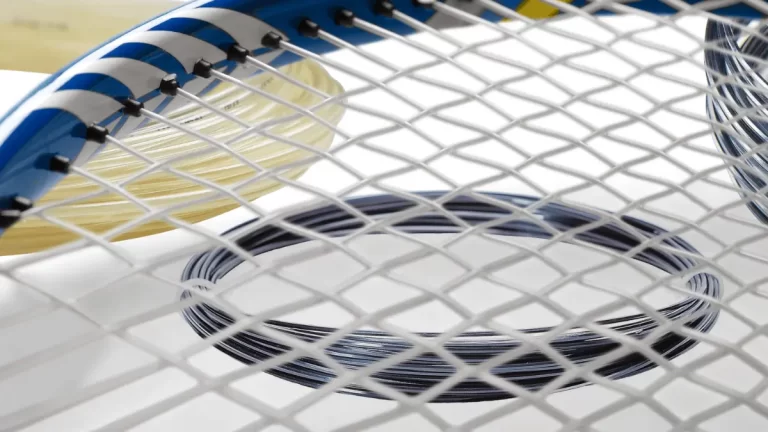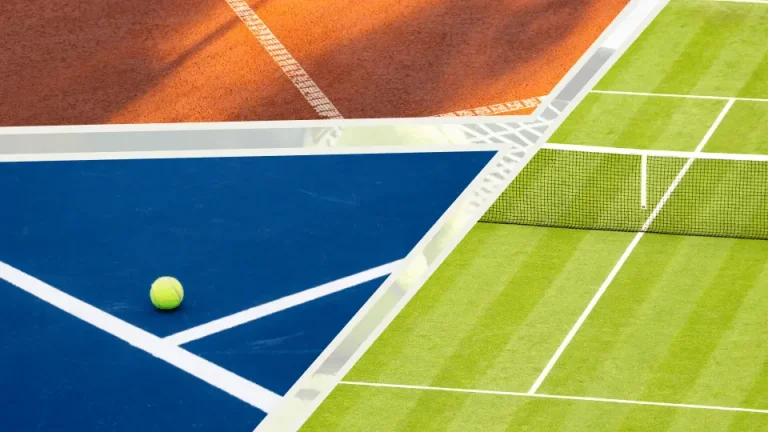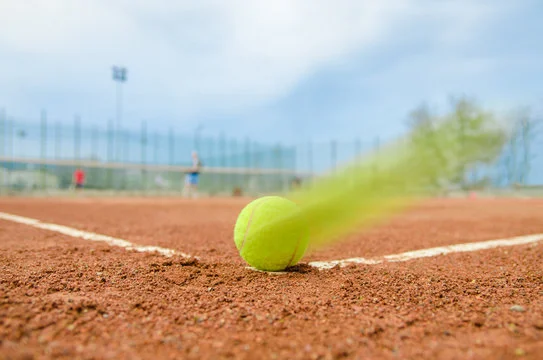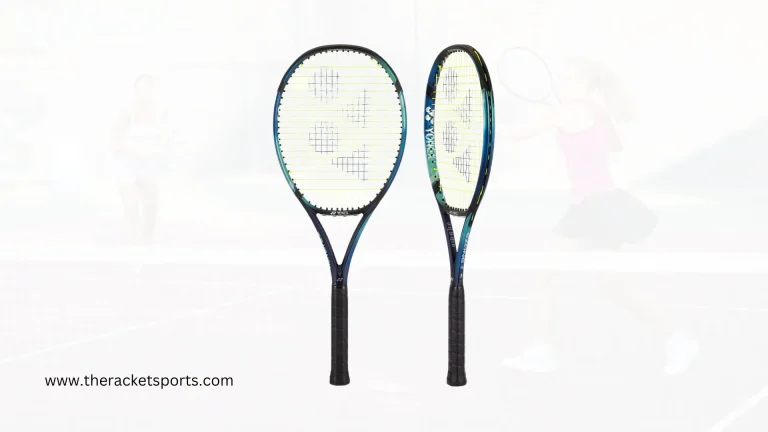How to String a Tennis Racket – Pro Techniques 2025
The String of a tennis racket is a crucial aspect of tennis equipment maintenance that often gets overlooked. How to string a tennis racket can be hard if you are trying the first time. Proper stringing can significantly impact your game, providing you with the power, control, and comfort you need to excel on the court.
In this comprehensive article, we will guide you through stringing a tennis racket step by step, ensuring you acquire the knowledge and skills to do it yourself. You can also better understand the process if you prefer professional stringing services or watching some YouTube videos.
Many players underestimate the significance of racket stringing even though it may mean the difference between an average and an outstanding game. You can use the proper tension and string type to personalise your racket to your playing style.
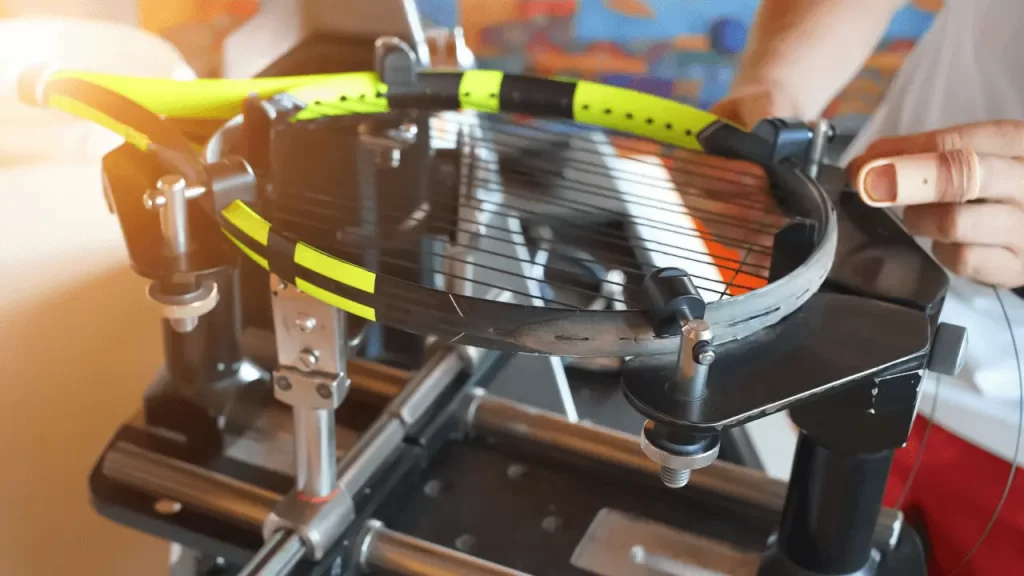
Whether you’re an aspiring tennis pro or a casual player, mastering the art of stringing your racket is a valuable skill that will elevate your performance and enhance your overall tennis experience.
How To String The Tennis Racket For Beginners
| Step | Description |
|---|---|
| 1. Choosing String Tension | Select the appropriate tension within the recommended range based on your playing style and preferences. |
| 2. Selecting the Right String Type | Consider the characteristics of different string materials (e.g., natural gut, synthetic gut, polyester) and choose the one that suits your needs. |
| 3. Gathering Necessary Tools and Equipment | Ensure you have all the required tools and materials, including a stringing machine, clamps, extra strings, utility scissors, and a well-organized workspace. |
| 4. Remove the Old Strings | Carefully cut and remove the old strings using utility scissors, taking safety precautions to prevent accidents. |
| 5. Setting Up the Racket | Securely place the racket frame into the stringing machine, ensuring stability. |
| 6. Stringing Technique | Follow a specific technique for threading and securing the strings, maintaining proper tension, and tying knots. |
| 7. Knotting All the Cross Strings | Tie secure knots for all the cross strings, ensuring they won’t lose during play. |
Preparing for Stringing: How to String a Tennis Racket By Hand
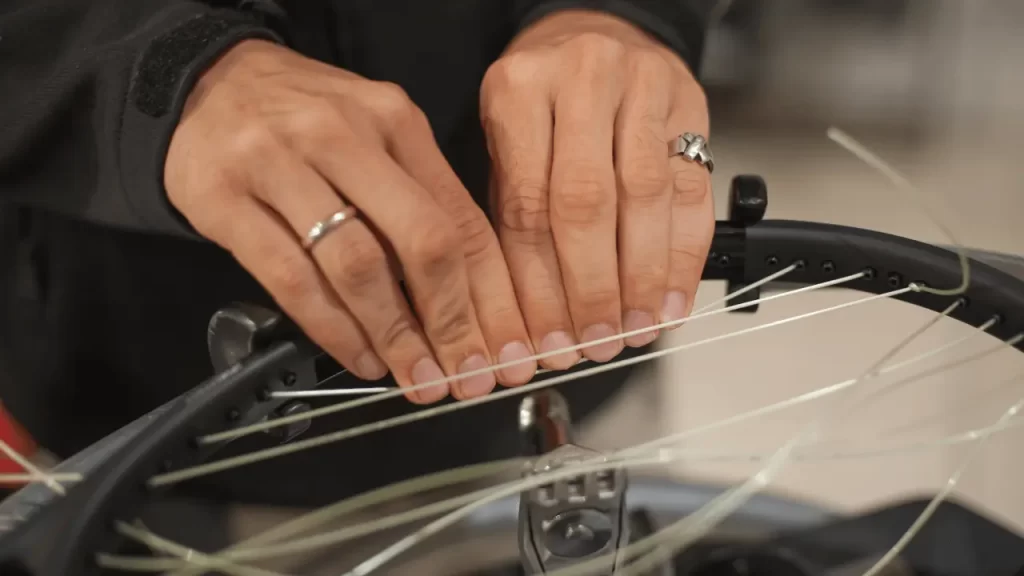
Choosing String Tension
Before stringing a tennis racket, you must determine the appropriate string tension. The tension of your strings has a major impact on your game. It affects your ability to hit powerful shots, control the ball, and how comfortable the racket feels in your hand.
Most rackets have a recommended tension range, usually between 50 to 70 lbs (pounds). You can adjust the tension within this range to match your playing style. Tighter strings give you more control and accuracy but may have less bounce, while looser strings can help you put more spin on the ball and provide a better bounce.
Selecting the Right String Type
Choosing the correct type of string is another crucial step. Different strings have different characteristics that can affect your game. You’ll want to consider factors like the material of the strings. For example, nylon strings are versatile and offer a crisp touch.
Polyester and Kevlar strings are more durable and suitable for powerful hitters. Natural gut strings are valued for their flexibility and feel but can be costly. Picking the best strings is like selecting the perfect tool for your style of play, and it can make a big difference in your performance.
Gathering Necessary Tools and Equipment
Before stringing, ensure you have all the necessary tools and equipment. This will help you work efficiently. You’ll need utility scissors for cutting strings and a stringing machine like the Gamma X-2, a popular choice.
It is equipped with a two-point mounting mechanism and drop-weight tension. Don’t forget to have extra strings, clamps, and other materials on hand to avoid interruptions during stringing. Setting up an organised workspace with all your tools within reach will make the stringing process easier and more enjoyable.
Remove the old strings
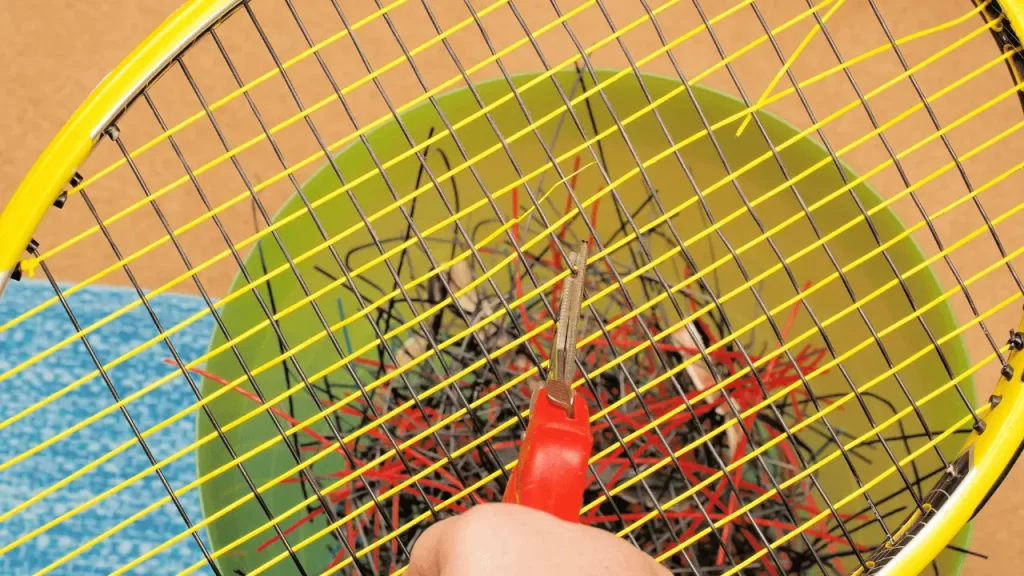
Using Utility Scissors
If you have a worn-out racket and want to replace the old strings, the first step is to get rid of the old strings. You will need a pair of utility scissors for this. Then, using a careful technique, clip off the old strings from the racket frame. Take your time and avoid inadvertently cutting yourself on the loose ends of the string.
Safety Precautions
Taking safety precautions is essential as you handle the scissors and cut the old strings. Ensure that you have a clear workspace, free from any potential hazards. To avoid mishaps, keep your fingers away from the path of the scissors when cutting. By following safety guidelines, you can complete this step safely and efficiently.
Setting Up the Racket
Putting the Racket Frame into the Stringing Machine
After you’ve got rid of the old strings, it’s time to string the racket. This entails inserting the racket frame into a stringing machine. Use the four main screws to secure the racket frame within the machine. Ensure the machine tightly holds the racket to ensure stability during stringing.
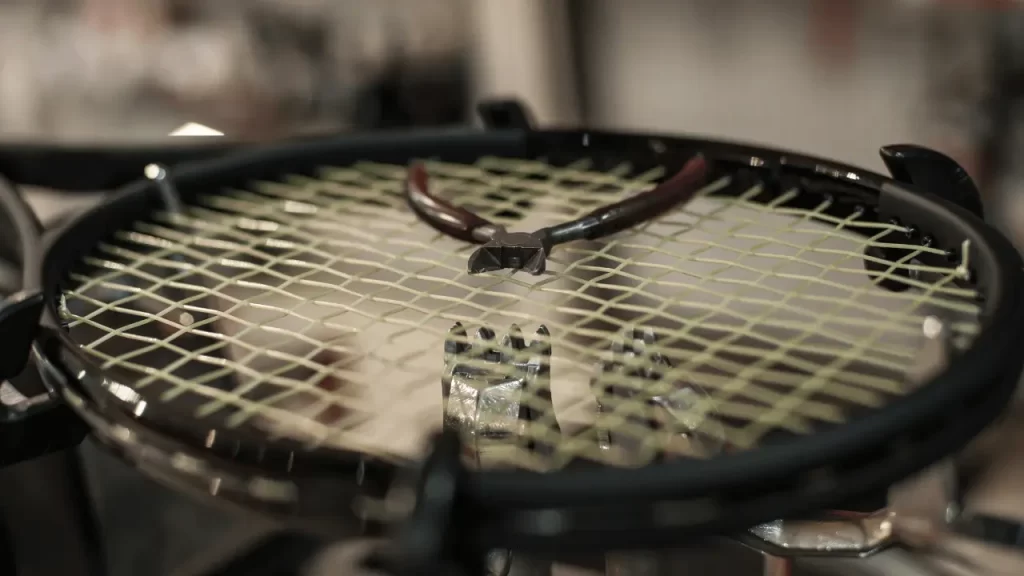
Ensuring Stability
Stability is crucial when stringing a racket. A securely placed racket frame prevents any unnecessary movement or wobbling during stringing, which can affect the quality of the string job. By properly setting up the racket in the stringing machine and ensuring stability, you create the ideal conditions for accurate and efficient stringing.
Certainly, here’s a simplified breakdown of Section V:
Stringing Technique to String a Tennis Racket
A. Inserting the Main Vertical String
- Begin by inserting the main vertical string from the racket’s head towards the neck. Ensure that you thread it through the appropriate grommets in the correct sequence.
- Tension the string appropriately according to your racket’s specifications. You’ll need to consult the manufacturer’s instructions for the appropriate tension.
- While securing the string, ensure it is properly placed under the racket frame to maintain its position and alignment.
B. Securing and Tightening the String
- Attach the string to a clamp to hold it in place securely. Position the clamp near where you’ve threaded the string through the grommets.
- Adjust the tension rod on your stringing machine to match the recommended tension for your racket. This adjustment ensures that the string is tightened to the correct level.
- Follow the designated stringing pattern for your racket, which typically involves clamping and releasing the strings in a specific order. This pattern maintains proper tension and alignment.
C. Knotting the Main String
- After you’ve securely placed all the main strings, it’s time to tie a firm knot at the end of the string. This knot helps maintain tension and prevents the string from falling during play.
- Carefully cut off any excess string beyond the knot, ensuring a clean and neat finish.
D. Stringing the Horizontal Cross Strings
- To add the horizontal cross strings, start by weaving them over and under the main strings. Follow the predetermined pattern specific to your racket.
- Secure and tighten each cross string using clamps as you progress. This step maintains consistent tension throughout the racket.
- Continue clamping and releasing, adhering to the designated pattern until all cross strings are in place.
E. Knotting All the Cross Strings
- Complete the stringing process by tying knots for all the cross strings. These knots should be secure to prevent any movement during play.
- After tying the knots, carefully cut off any excess string, ensuring a clean and professional finish.
Following these detailed steps in the stringing technique ensures that your tennis racket is strung correctly, enabling you to achieve the desired tension and play at your best on the court.
Tips To Make Your Racket Stringing Easy
Stringing a racket can be a precise and sometimes challenging task, but there are several tips to make the process easier and more efficient:
- Prepare Your Workspace: Before you begin, make sure your workstation is clean, well-lit, and organised. Having your equipment and materials close at hand will save you time and other side hassle.
- Read the Manual: If you’re using a stringing machine, thoroughly read the instruction manual that comes with it. Understanding how the machine works is essential for a smooth stringing process.
- Use a Stringing Machine: Investing in a good quality stringing machine is a game-changer. It ensures consistent tension and makes the job much easier than stringing manually.
- Stringing Patterns: Always use the stringing pattern specified for your racket. Breaking away from this pattern might result in uneven tension and have an impact on your game.
- Pre-Stretch Strings: Some players pre-stretch their strings to minimise tension loss after stringing. If you choose to do this, follow the manufacturer’s recommendations for your specific string.
- Maintain Your Tools: Ensure your stringing machine and tools are well-maintained. Clean and oil the machine regularly, and replace worn-out clamps or other components as soon as possible.
- Learn Knot Tying: Master various knot-tying techniques, such as the starting knot, finishing knot, and knots for tying off strings. Secure knots are essential for string longevity.
- Practice Makes Perfect: Stringing is a skill that improves with practice. Don’t give up on a few failed attempts; becoming skilled usually takes some time. Practice on old rackets or seek guidance from experienced stringers.
- Measure String Length: Measure and cut your strings carefully to avoid waste. It’s better to have a slightly longer string than needed, which you can trim later than to start with a too-short piece.
- Use String Savers: Consider using string savers, small plastic or rubber devices that reduce friction between strings at crossover points. They can extend the life of your strings.
- Keep Tension Consistent: Maintain consistent tension throughout the stringing process. Use a stringing machine with a tensioner to achieve this, as manual stringing can lead to uneven tension.
- Check String Quality: Ensure the quality of your strings. High-quality strings are less likely to break prematurely and can improve performance.
- Follow a Routine: Develop a routine for stringing your racket. Following a step-by-step procedure might help you keep organised and avoid mistakes.
- Ask for Help: If you’re new to stringing, don’t hesitate to seek advice or help from experienced stringers or professionals. They can provide valuable insights and guidance.
- Stay Patient: Stringing can be a meticulous process, so stay patient and focused. Rushing might result in errors and unequal strain.
By following these tips and continuously improving your stringing skills, you can make the racket stringing process easier and more enjoyable, ultimately enhancing your performance on the tennis court.
Conclusion
To summarise how to string a tennis racket, our simple strategy is to choose a string and start playing around. Stringing a tennis racket is an important skill that could possibly have a major impact on your game when you start playing tennis. From choosing the correct string tension and type to following the proper stringing techniques, every step plays a vital role in customising your racket for optimal performance.
String properly guarantees you the power, control, and comfort required for successful play on the court. Whether you’re a seasoned player or enjoy occasional matches, understanding the importance of stringing and how to do it correctly can elevate your tennis experience and serving techniques.
So, don’t overlook the significance of proper racket stringing. By following the guidelines outlined in this comprehensive guide, you can take control of your equipment, enhance your game, and, ultimately, enjoy a more satisfying and competitive time on the tennis court.
Frequently Asked Questions
What string tension should I use on my racket?
String tension is recommended based on racket and player preference. The ideal tension range for most rackets is usually between 50 and 70 pounds. Within this range, you can experiment to discover the tension that best matches your playing style.
How do natural gut, synthetic gut, and polyester strings differ?
Natural gut strings are manufactured from cow or sheep intestines and have a great feel and power, but they are more costly and less durable. Synthetic gut strings are affordable, versatile, and offer an excellent balance of power and control. Polyester strings are durable and perfect for players who generate a lot of spins but don’t have the most comfortable feel like some other strings.
How do I know when to change my strings?
Visible wear, fraying, loss of tension, diminished performance, or strings breaking are all signs that your strings need to be replaced. Inspect your strings regularly for these clues to decide whether it’s time to re-string.
Can I combine a variety of strings in my racket?
You can hybrid string your racket (use various strings for the mains and crosses). This allows you to tailor the performance of your racket to your preferences.


